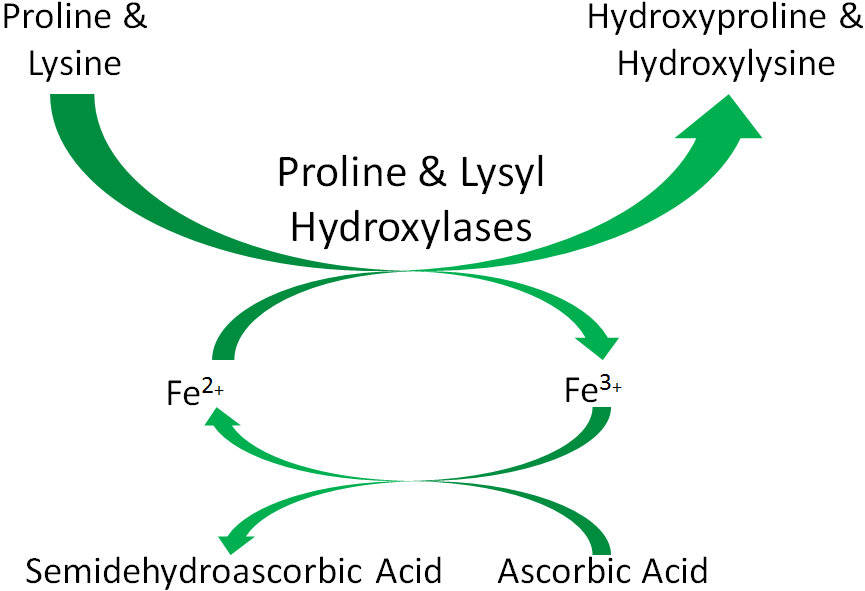75 6.11 Cofactors
Two common cofactors that are derived from the B vitamins, niacin and riboflavin, are nicotinamide adenine dinucleotide (NAD) and flavin adenine dinucleotide (FAD), respectively. The structure of NAD and FAD are shown below.


Both of these cofactors can be reduced; NAD is reduced to form NADH, while FAD is reduced to form FADH2 as shown in the 2 figures below.


An example of a mineral that serves as a cofactor is Fe2+ for proline and lysyl hydroxylases. We will discuss later in detail why vitamin C (ascorbic acid) is needed to reduce iron to Fe2+ so that it can serve as a cofactor for proline and lysyl hydroxylases.

References & Links
1. http://en.wikipedia.org/wiki/File:NAD%2B_phys.svg
2. http://en.wikipedia.org/wiki/File:Flavin_adenine_dinucleotide.png
3. http://en.wikipedia.org/wiki/File:NAD_oxidation_reduction.svg
4. http://en.wikipedia.org/wiki/File:FAD_FADH2_equlibrium.png

